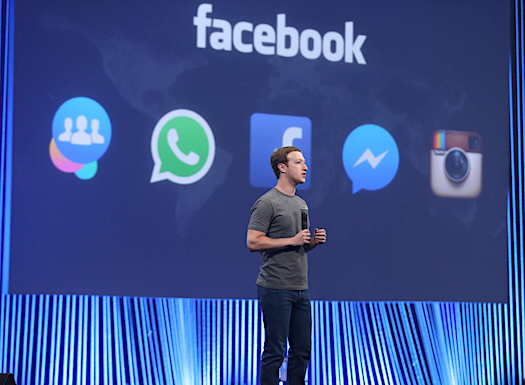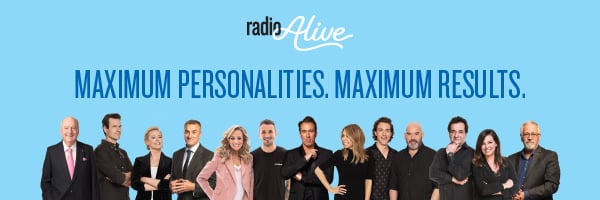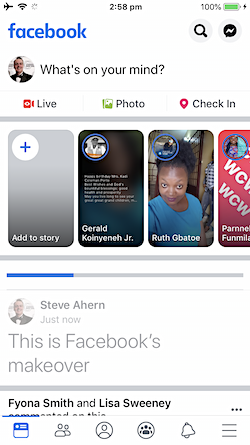Steve Ahern analyses Facebook’s new priorities.
At Facebook’s F8 developer conference last week Mark Zuckerberg outlined a range of new directions for the global social media platform.
“I know that we don’t exactly have the strongest reputation on privacy right now,” Zuckerberg told the developer audience assembled to hear about the social media company’s priorities for 2019.
As well as a range of predictable responses to pressure for more privacy, which will change the priorities about how audiences see and react to content, there are also other trends worth understanding for those who develop content for their radio station Facebook pages.
Facebook is a big driver of interaction and engagement and is part of most stations’ marketing mix, often bringing big numbers to station content. KIIS 106.5 Sydney for example has 670,610 who like its FB page, while Nova 96.9 has 246,950 likes and 2Day has 510,672. The ABC News FB page has about 3.9 million likes.
Since the last batch of changes to Facebook’s algorithms, social media page managers have adapted their posting strategies, making sure that posts are spaced out well enough so that one quick post after another does not diminish the number of reactions to earlier posts.
More adaptations are likely to be needed as the new 2019 Facebook strategies roll out.
Groups
With privacy high on the agenda, Facebook will prioritise groups, giving them more prominence on the main pages and alerting users to group posts in a more timely manner. It looks like Messenger and the Groups function within Facebook will be more closely integrated, as will Facebook’s other messaging asset WhatsApp.
It is likely that engagements with your main page posts will decrease in the face of the changes to be introduced this year, but there are also new opportunities. The increased priority for Groups will give radio stations the opportunity to slice the discussions they currently have on their main pages into audience segments grouped by interest.

ABC Radio has such a public group called Weather Obsessed for people with an interest in, you guessed it, weather. The group has about 27,000 Australians in it and posts are shared across all ABC Radio Facebook pages.
Some music stations, and their format consultants, already use facebook groups to test playlists and there is now even more opportunity for music stations to build discussion groups around listeners’ favourite decades or styles of music.
Facebook Videos
Facebook’s ongoing aim is to keep people in its own ecosystem. This year it will introduce a dating function to rival external dating apps, aimed at keeping that audience inside Facebook.
You may also have noticed that Facebook no longer plays Youtube videos inside its own portal, but forces the user to go to an external window for Youtube.
Why would it do this if it wants to keep viewers inside its own ecosystem? Money is the answer.
Over the years Youtube has successfully built a monetisation system that embeds ads into videos and shares revenue with its users. This year Facebook is copying that feature and has just introduced its own video monetisation system. Users with over 10,000 likes and qualifying video content can now activate a monetisation function that will put ads into videos. This is why Facebook is no longer playing nice with Youtube, because it has worked out how to do the same thing itself.
If you use the Youtube video monetisation function, how much will you get?
It’s hard to find the answer to that question, but I burrowed into the terms and conditions about videos and finally found that Facebook will keep 45% of all revenue and the user will get 55%. Just how much each ad will deliver is as yet unknown, but, given the fact that Facebook has many more users that Youtube, the potential revenue could be large.
Page administrators will need to post videos directly to Facebook to take advantage of this new monetisation feature, not link out to Youtube, Vimeo, or other platforms. Video insights analytics have also improved inside Facebook’s Business Manager to support this new feature. I analysed a random sample of a dozen radio station pages and found that most capital city stations are already uploading videos directly to Facebook, while some regional stations were still posting Youtube video links.
Unfortunately for us in the audio medium, catch up audio clips and podcast links posted on Facebook usually send the reader to another page rather than starting to play inside the Facebook ecosystem. Whooshkaa is an exception to that, it is the one player I know of that will play inside Facebook. Google has also recently announced easier discoverability for podcasts and looks set to enable audio replays within the Google ecosystem soon, as it does with Youtube (which is owned by Google).
Transparency
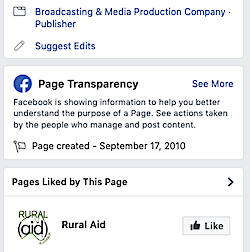 Who can forget that we have an election looming in Australia. After examining the effects of manipulation on election results in other countries Facebook has put in place transparency features to make it easier for users to trace the source of political messages that turn up in their feeds and flag them as manipulative. These measures also now reveal information about every FB page.
Who can forget that we have an election looming in Australia. After examining the effects of manipulation on election results in other countries Facebook has put in place transparency features to make it easier for users to trace the source of political messages that turn up in their feeds and flag them as manipulative. These measures also now reveal information about every FB page.
Take a look at the side bar of your facebook page (on desktop) and you will see a new box called transparency. It is visible for all pages and tells you some things about the page, such as when it was created, if the name has changed and where the administrators live.
You can also see if the page is running ads or boosting posts.
Transparency shows that Nova, for example, has changed its name slightly three times since its page was launched and is currently running some ads for its posts. This is likely to become a well used tool for stations to see what their rivals are doing online.

ABC Sydney has 53 administrators in Australia, presumably producers who work directly at the station and other corporate staff who oversee the ABC’s suite of Facebook pages. It also has one administrator in America and one in an undisclosed location.

It may be time to do an audit on who has admin or editor rights to your page. Are there still some past employees who have not been deleted?
Go to Page Settings > Roles and check who is on the list. Also check what role they have, because more roles have been added in the last year, including roles for advertisers (who cannot post but can boost content and see analytics) and editors (who can post, but not make top level changes to the page).
New Look
Gone is the blue bar and white writing, replaced by more circles and blue writing on a transparent background.
The new look is being rolled out country by country over the next few months.
Selling
Options for users to sell products is being enhanced in Facebook and also in the company’s other property Instagram, which is its focus on promoting products and brands.
There are a range of other changes coming to Facebook, but the ones above are the most important for radio people in my opinion. It will be a year of change for every station’s social media teams, if you are one of those teams make sure that you keep up with the changes. If you are a manager, do some research about the changes and be sure to ask your teams how they are adapting.
About the Author
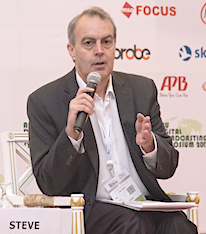 Steve is the founding editor of this website.
Steve is the founding editor of this website.
He is a former broadcaster, programmer, senior executive and trainer who now runs his own company Ahern Media & Training Pty Ltd.
He is a regular writer and speaker about trends in media. More info here.

